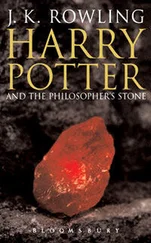“In refrigeration systems, for example, a compressor is used to pressurize a gas and convert it to a liquid. This is practical as long as the system insures that the temperature of the fluid stays below the critical temperature. That part of the system is usually designed to dissipate heat so that the fluid crosses the boiling curve from left to right and becomes liquid. In another part of the cooling system, the pressure is reduced by forcing the liquid through a small hole. The resulting liquid droplets are allowed to evaporate. The fluid then crosses the boiling curve from right to left. We know that evaporation causes cooling from the way that the natural evaporation of our perspirations helps to cool our bodies on a hot day.”
“Very nice, Marie!” The professor complimented her before continuing with his discussion of the hypothetical phase diagram. He was glad to see that the students were not only following his ideas, but contributing ideas of their own.
“It is also possible to cross the gas-liquid boundary without changing the pressure by cooling the gas below the boiling point of the substance. You have seen this phase transformation while watching water boil in a pot with a glass lid. The steam cools and precipitates into water droplets on the cooler pot lid. Normally, when water boils, the temperature is increased by an external heat source but the atmospheric pressure on the surface of the water remains constant. At constant pressure, you cross the boiling curve in the phase diagram from the bottom up while cooking and vice verse from the top down when water condenses. This process is obviously very important in the atmosphere and the condensation of water vapor to form dew or raindrops. The dew pointthat weatherman reports on the radio or TV is indicative of the temperature at which condensation will occur at constant barometric pressure on a particular day. That temperature varies from day to day, depending upon the relative humidity of the air.”
“I always wondered why they report the dew point on the TV,” Helen remarked. “What happens if the temperature is higher than the critical temperature in any of these systems?”
“Good question,” Professor Wood replied. “If the temperature is higher than the critical temperature, the motion of the particles becomes so strong that the attraction between the particles does not really matter anymore. Then there will be no more condensation of droplets. At that point, the system is represented in the phase diagram by this area above the end of the boiling curve.”
Professor Wood pointed to the area at the top-center of the chart ( Figure 14). “In this supercritical range above the critical temperature, there is no qualitative or real structural difference between liquid and gas. The ancient Greeks and the alchemists did not know about this state. There has been a lot of research done in modern times on pure substances in the supercritical region of the chart. It turns out that for many substances, particularly for metals and quite a few salts, the critical temperatures are so high that the substance transforms to the plasma state by the time it reaches its critical temperature.
“You may also have noticed that, in this phase diagram, the transition to the plasma state has no clear boundary. Instead, there is a gradual increase in the number of ionized particles and it is not possible to draw another boundary line on the diagram. The transition is too smooth!”
“Now let me ask you a question, Helen,” the professor teased. “Do you agree now that a modern phase diagram is quite similar to those pictures of the ancient alchemists for their four elements, the four essentia ?”
“Yes, thank you. Now that you have shown us that plasma is a fourth phase of the state of matterthat all materials have, I can see the similarity,” Helen answered. “I also understand why we don’t talk about essential elements today. We simply refer to these four phases when we describe the differences among substances that the ancients had also observed. On the other hand, I still don’t see anything that corresponds to the fifth symbol, the six-pointed star in the middle of the four essentia , on that diagram that Marie has. That fifth essentia is the one that you described as having the properties of all the other four at the same time. Is there something on this diagram that corresponds to the quintessence ?”
Professor Wood continued with a nod toward the phase diagram, “The ancient Greeks developed the idea of indivisible atoms, but the view that we are looking at here involves molecules, atoms, ions and electrons. Have you heard about radioactivityin your courses at school?
“Of course!” Helen replied. “During the Fukushima disasterthe whole area was contaminated by radioactive debris! My chemistry course also touched lightly upon the subject of nuclear decay.”
“And where did the radiation come from?” asked the professor.
Helen’s high school chemistry teacher had delivered a special lecture to the class at the time of the disaster. Everyone in the class was aware that the disaster was serious and that many people were justifiably afraid of radioactivity. But they had been unclear about what was really going on. Helen responded to Professor Wood’s question with what she could remember of that lecture.
“In the case of the Fukushima disaster, radiation came from the radioactive materials that had been placed in the reactors to produce heat when their nuclei changed from one element to another. The nuclei emit alpha, beta, or gamma rays during their decay. When the tsunami destroyed the walls of the reactors, these materials were spread around the area. They were no longer contained but they continued to change and give off radiation. The heat that the changes made then was just lost to the atmosphere. That was not so dangerous.
“The danger to humans and other living things was that the gamma rays, which were really like very high-energy light waves, cause damage to the cells of living tissue – far worse than the damage that the ultra-violet light from the sun can cause to our skin. The main problem is that radioactive elements can be inhaled or ingested, and some of them are bioactive and become lodged in tissues, instead of being quickly excreted. Since the nuclei are inside of the body, the damaging radiation is alpha and beta radiation. Radioactive cesium and iodine are good examples of elements that increase the risk of bone and thyroid cancer. 8 Gamma radiation from Cesium 137 inside the body poses a greater risk for cancer in humans than direct gamma radiation from outside the body.”
Professor Wood nodded to show his approval of Helen’s explanation. “When one chemical element changes to another without any help from an external source, we say that the nucleus has undergone radioactive decay . Your teacher probably also told you that Marie Curie, Pierre Curieand Henri Becquerelreceived the Nobel Prize in 1903 for their detailed investigations of this natural radioactivity, right?”
As Helen nodded in the affirmative, Professor Wood continued his explanation. “With their discoveries, they opened up a whole new field of science. They recognized that the atomic nuclei can decay, and that new and unknown particles are produced during the decay of the atomic nuclei. I don’t want to get into a detailed discussion right now of all the new elementary particleswhich were subsequently found. A whole ‘zoo,’ to use a popular expression, of elementary particles has been observed since then."
“So does this zoo of elementary particles have anything to do with the quintessence ?” Helen asked. She was not about to give up asking him about that until she got a satisfactory answer.
“We’ll get to that,” the professor said. “But I guess that I can’t really explain the modern notion of quintessence to you without giving you at least a broad overview over the microcosm of the elementary particles after all.
Читать дальше












